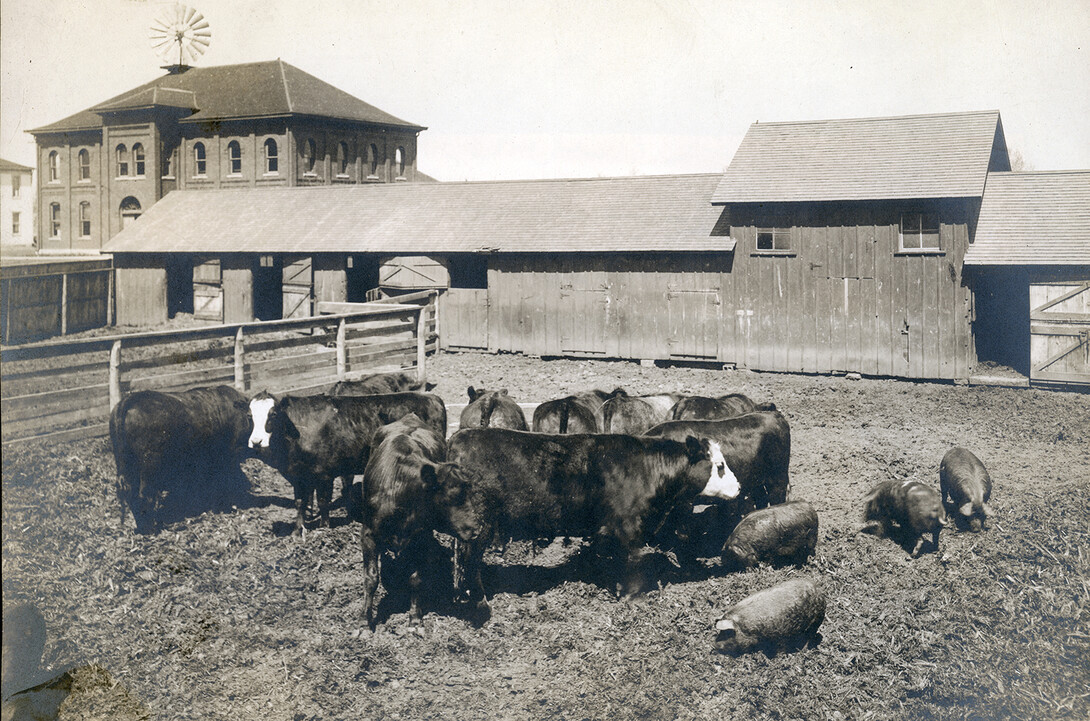
Founded in 1898, the University of Nebraska–Lincoln’s Department of Animal Science (originally known as the Department of Animal Husbandry) has a rich history of teaching, research and outreach that has impacted every corner of the Cornhusker State.
E.A. Burnett was hired to be head of the department in 1889. His first expenditure in 1890 was $1,500 for Hereford cattle to be used in feeding experiments. Major advances of the department in that first year include erecting sheds for cattle research; maintenance of horses to produce serum used in hog cholera experiments; and distribution of 33,000 doses of blackleg vaccine (furnished by the federal government) to cattle producers.
In the undated photo at top, cattle stand on the East Campus Mall. Agriculture Hall is shown at left. The cattle are pointed east, toward Ag Communications Hall (the old Experiment Station building).
The image below shows participants lined up during a livestock judging contest held around 1908 on the “College Farm,” known today as East Campus. The building under construction (right) was first used by Animal Husbandry as a judging pavilion. The building was later named Miller Hall. The two-story building in the background (with smokestack and windmill) was the Ag Engineering building from 1918-1953. The north end of Ag Engineering was used as a meat lab. Slaughtering, meat cutting, sausage making, lard rendering and meat sales were all done from the same large room. The only refrigeration was a 10-foot by 12-foot walk-in cooler operated via an ammonia system.

These historical photos were provided via the Charles Adams Animal Science Papers, which is part of the University Archives collection. Learn more about the history of Animal Science.
University Archives and Special Collections Angus from Cook Ranch at Agate, Nebraska, were studied as part of research efforts on East Campus in the early 1900. The department was led by H.A. Smith at the time of this image (1907-1908).
“From the Archives” is a weekly feature in Nebraska Today. Images are provided by Traci Robison, outreach archivist and assistant professor of practice with Archives and Special Collections in the University Libraries. Explore the Archives and Special Collections online. For more information, contact Troy Fedderson at tfedderson2@unl.edu or 402-472-8515.









